The Mosin Nagant bolt-action rifle was superseded by the need for a semiautomatic rifle firing the same potent caliber. Simonov came up with a design in 1936 that didnt win universal approval, and shortly thereafter Tokarev came up with his models 1938 and 1940 SVT rifles (costing about $500 to 700 today), the latter version being one-half the subjects of this report. The other half is the more recent Romanian PSL-54C (about $700 without scope), which still takes the rimmed 7.62 x 54R cartridge. This rifle resembles the AK-47, and is in fact based on it. It was issued as a designated marksman rifle. Normally scoped, our test sample had only iron sights.
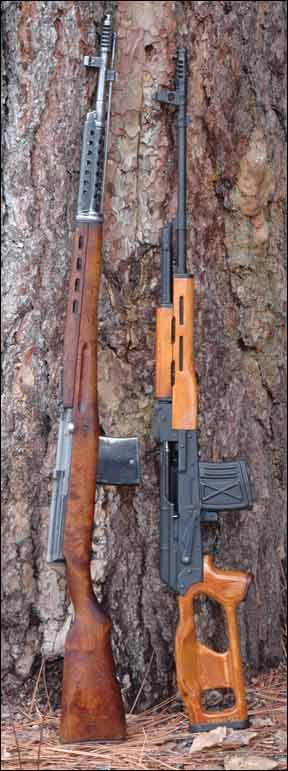
We shot these two rifles with Russian ball of two different types. Note that this ammunition is available inexpensively, and also with soft-nose steel-jacket bullets. Most armorers we know say to avoid soft-nose ammo in semiautos, so we did that. Most Russian-made ammo weve seen locally uses steel cases, but Norma has loaded it in recent years with brass cases, and still offers brass cases and bullets for the reloader. Several other manufacturers offer modern ammo with a great variety of bullet designs for this still very popular cartridge. All the bullets weve seen loaded in Russian ammo are steel-jacketed, even the soft-nose ones. Here are our test results.
Tokarev 7.62 1940 (SVT), $500-$750
SVT stands for Samozaryadnaya Vintovka Tokareva. We thought youd never ask. Even though it was later considered to be somewhat unsuited for rugged military use, the 1938 and 1940 Tokarevs saw lots of action in WWII. The design came about at about the same time as the FAL was developed by Saive. There is some doubt as to which design came first. The gas-powered operating systems of both designs are quite similar. Basically a hole in the barrel near the muzzle directs gas to a piston which is on top of the barrel, parallel to the bore. On the SVT there is a gas regulator adjustable to five positions. We left it where we found it. The FAL has a similar gas regulator.
The SVTs piston is driven rearward by combustion gas, and it drives a rod or tappet which is mated to a plunger that strikes the front of the bolt carrier. The carrier, driven rearward, unlocks the bolt, and the bolt and carrier zing back against springs to eject the spent cartridge, cock the hammer, and pick up a fresh cartridge. A detachable magazine supplies 10 of the rimmed cartridges. The rifle can also be recharged by using stripper clips. We suspect Saive (FAL) may have had an easier time wrapping a rifle around a rimless cartridge. At the least, his magazine design was simpler. Tokarev and Simonov had to work with the rimmed Russian round, which was used in the Mosin Nagant bolt-action rifles.
Our first handling of the Tokarev revealed to us a handy, relatively light rifle that seemed to be entirely too long, but was still easy to hold and shoot. Julian Hatcher in his Hatchers Notebook remarked on the lightness of this rifle. We fired a few rounds offhand to get a feel for both rifles, and the SVT had a decent if long trigger. Unlike the PSL, the SVTs barrel was not anywhere near new, so we suspected accuracy would suffer. The stock appeared to be walnut or possibly birch. It was slim and trim, vented on the forend, and surrounded the front sight in a manner that would help keep brush off it.
The forward part of the stock was composed of two pierced steel covers, one on top and one on the bottom, which covered the forward end of the gas tube. The gas bump on the barrel is removable, along with the integral front sight base and the combination bayonet mount and cleaning rod mount, and also the compensator itself. All this is one machined part that unscrews from the barrel just behind the gas port. The machining throughout was intricate, and well done. We followed instructions on takedown from Smith & Smiths Small Arms of the World, 1969 Edition, and dug into the Tokarev. Though somewhat wordy in that book, the takedown procedure was actually relatively simple if you follow it all, step by step. We wont repeat it in detail here, though. If you have one of these rifles, we recommend having someone show you how to take it down, because it can be tricky.
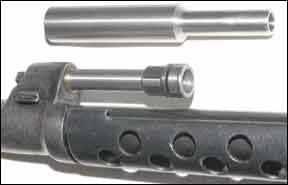
Basically find a button under a hinged door at the rear of the action, press it and take out the trigger group. Hint: the button has a large hole in it. The button itself is the periphery of the hole. Pull the recoil spring by shoving the top shroud forward and fishing out a set of two highly compressed inline springs with guides. Wear eye protection. Take off the shroud, tip out the bolt and its carrier, and there you are. To remove the gas works, slip the forward stock ring (with sling swivel) off the front, lift off the top sheet-metal cover, and push and pull properly until the piston, tappet, and rear drive rod and spring come out. We got it all apart, took our images, and then put it back together. The parts went back in easily, snapping into place like they belonged there. That was a pleasant surprise after the hoops we jumped through to get it all apart. We suspect the poor soldier in the field would have had the devil of a time with this one, getting it field stripped. Certainly its far more complex than pulling apart an M1 Garand, and there are more parts that can easily be lost.
Once inside we marveled at all the intricate machining. The top cover, which we had thought was a stamping, was machined. It was so thin that it gave the impression of a stamping. The rear end of it had a piece welded in, which was the plug that retained the recoil spring. The arms student will have a field day figuring out how all these parts were machined. Our resident machinist was stumped on several parts. Thats the way things were done in the old days. Today this would be all stampings, spot-welded bits here and there, castings, and the like. So for a fascinating trip down memory lane, we thought it probably worth its price just to look inside the SVT and see how it was made, how things used to be done long ago in the wonderful world of firearms.
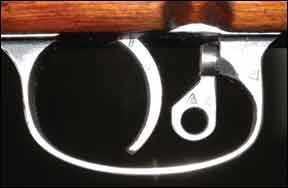
The sights gave an excellent picture. The rear was a ladder-type regulated to 1500 yards. The lowest setting was for 100 yards. The front post was encased in a circle of steel with an opening at the top to adjust the post height to match the cartridge. The entire ring assembly was drift-adjustable in a dovetail for windage.
On the range, we found the SVT was a pleasant rifle, though that muzzle brake did make some serious noise. The trigger pull was long and a bit tough, but consistent. The reliability of the rifle depended on the quality of the ammo, at least at the regulator setting we had. The first test ammo (both were Russian FMJ of two different makes) was not reliable for the first four or five shots out of the magazine, but the second ammo type, which was hotter, worked all the time with zero failures. The usual failure with the first ammo type was that the bolt failed to go backward far enough. Fresh rounds were simply not picked up. When we had a failure to feed, we could tell by the sound of the bolt and also could easily see what was wrong, thanks to the open top of the action. Not so the other rifle, with its cover, which left us in the dark several times. The regulator would have to be set for your chosen ammo, to give best reliability.
The accuracy was not as bad as we thought it would be by our first inspection of the barrel. The groups averaged 2.4 inches at 50 yards for three shots with the first type ammo, and 1.9 with the second type. Clearly the second type fit the rifle better, because it gave about 100 fps more speed, but only 50 fps more in the other rifle. Ejection from the SVT was always strong and positive. The bolt always locked open after the last shot. More to the point, our shooters liked this rifle more than the other one, because of its stock, great feel, and what we thought was more class.

Our Team Said: We thought the Tokarev SVT felt like a normal rifle, not an assault-style rifle, with vertical grip and dangling banana magazine that make it hard to shoot from the bench, or from any decent rest. The prices on both types of these rifles seem to be going astronomically up. Several nice-looking versions of the SVT sold recently for about $1000. This one was not as nice as those, but was not bad. We guessed $500-750 would be a reasonable price range. We think the gun student will be rewarded by obtaining one of these. With the price of some of the Russian rimmed ammo being so low, some shooters might even consider the Tokarev SVT for a serious home-protection rifle today.
Romanian PSL-54C, about $700 w/out scope
Our second rifle is a Romanian PSL-54C, also known as the FPK Dragunov among a few other names. PSL stands for Pusca Semiautomata cu Luneta, which means scoped semiauto rifle. Introduced into the Romanian forces in the late 1970s, the rifles main purpose seems to be as a sort of sniper rifle. However, we did not get a scope with our test rifle. The PSL fires the same 7.62 x 54R cartridge as the Tokarev SVT. Its main characteristic is its Dragunov-type stock, which frankly we found to be somewhat uncomfortable at both the bench and offhand. It got our face too close to the rear of the action, and also made it difficult to pull the stock into the shoulder at the bench. This was especially notable compared to the Tokarev, which was a shooters dream for comfort from the bench or offhand.
This rifle is all about stampings, so you might say its a modern design. However, the overall function is like that of the AK-47, and indeed the controls, external configuration, and takedown are very similar between the two. Takedown was far simpler than for the SVT. Press a button, remove the cover, press that button again, and everything falls out. The gas-piston cover comes off by rotating a lever next to the rear sight. It makes it easy to maintain the rifle in the field, and everything is easily repaired. Thats a huge advantage over the SVT.
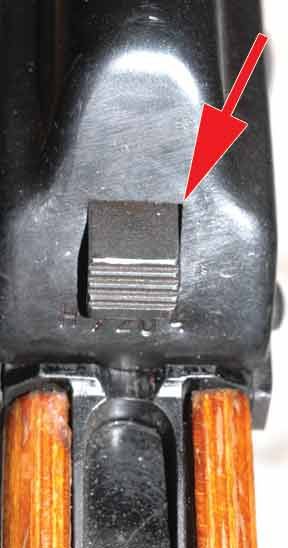
The PSL is fed from a 10-round curved magazine that resembled the mag on the SVT. The two mags do not interchange. Compared to the SVTs, the PSLs magazine was very hard and time-consuming to load, we found. It was necessary to press the follower down and feed the rounds in from the front, which we found inconvenient at best. By contrast, the SVT mag required a simple downward press, and we could load 10 rounds very quickly into it.
The rifle came with a new-appearing stock, laminated at the butt and solid two-piece birch at the front. The metal also appeared to be new, and the bore was pristine, as noted above. The construction featured many stamped, bent, and welded parts. The machined parts were crudely done by comparison to the SVT. However, that doesnt mean its not a sound rifle. It is. In fact, it appeared to be robust. The function and operation of the PSL was a good deal rougher feeling than the SVT, and it didnt get much better during the course of our testing.
The iron sights were similar to those on the SVT. The SVTs ladder went to 1500 yards and this one went to 1200. The front sight on the PSL stuck up in the air a mile, but was well protected by two wings. The front post was adjustable for windage by drifting and for elevation by means of a thread in the base of the post, so the post could be turned up or down to match the rear sight with the ammo of choice. This was just like on the SVT, and in fact the sight pictures were identical. The PSL was fitted with a muzzle brake. Some might think it was flash hider, but there was a big ball of flame visible on discharge, so if it was a flash hider, it was a mighty poor one. We think its prime function is to be a brake. The frame had the two-hole or sporting trigger setup, and was thus legal for importation. There was a mount for a scope on the left side of the receiver. Note that both test rifles locked their bolts open after the last shot, but both could easily be jarred shut by tapping the butt lightly on the ground. Though the sight radii on both rifles were nearly the same, the shorter stock on the PSL brought the eye 2 inches closer to the rear sight, which made focusing harder.
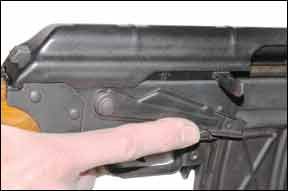
The buttstock of the PSL was somewhat loose in the receiver, not what you want on a supposed sniper rifle. We found the top stock screw to be very loose. We tightened it before our shooting, but still found accuracy to be not all that great. We liked the two-stage trigger pull, which was pretty good, even though it broke at 5.5 pounds. We would have preferred a straighter trigger that would have permitted pressing it closer to its tip. The rifles safety was identical to that on an AK-47, which means its inconvenient, noisy, and hard to reach.
On the range we had numerous failures to feed, usually on the fourth or fifth shot out of the magazine. Inspection showed a dry rifle with not much lube. After putting on some oil, we had better luck, but it still was not perfect. The problem round was picked up by the bolt but failed to enter the chamber. It did this with both types of ammunition. The roughness of the action was bad, even after lubrication, and that may have been part of the cause of the failures to feed.
Our Team Said: The overall impression of the PSL was nowhere near as pleasant as for the SVT. Despite the PSL being essentially new, we much preferred the Tokarev SVT. Accuracy here with the second, hotter ammo was not as good as we got with the Tokarev, but the PSL beat the Tokarev with the slower ammo. Will accuracy and reliability improve with more shooting? Most likely yes, as the parts get worn in. We did see several two-shot groups that were in one hole, and the best group we got was 0.8 inch, so the potential is there for better accuracy with this rifle. If we rated the two for ease of field maintenance, the PSL would get an A+, and the SVT would get a D. However, because of the PSLs roughness, discomfort, and failures to feed, we much preferred the Tokarev SVT, and believe you will too.

























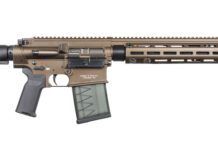
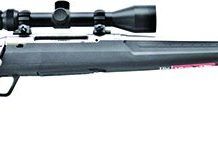

no paywall asshat